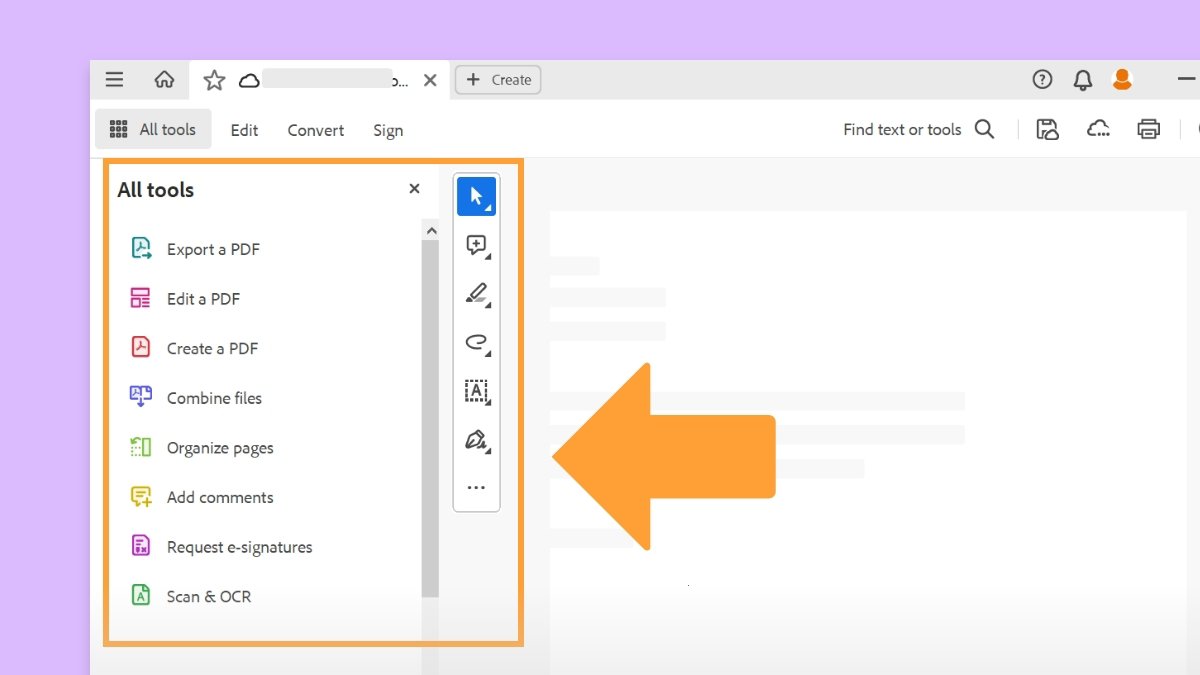Before you begin
We're rolling out a new, more intuitive product experience. If the screen shown here doesn’t match your product interface, select help for your current experience.
Before you begin
We're rolling out a new, more intuitive product experience. If the screen shown here doesn’t match your product interface, select help for your current experience.


You can open a PDF in many ways: from within the Acrobat application, from your email application, from your file system, or on a network from within a web browser.
Start Acrobat and do one of the following:
Open a file from the Home > Recent view.
Select Open from the hamburger menu (Windows) or File (macOS). In the Open dialog box, select one or more filenames and select Open. PDF documents usually have the extension .pdf.
To open file types such as DOCX, PPT or XLSX, go to Menu (Window) or File (macOS) and then select Open. Select All types from Show drop-down menu. The file will automatically be converted into a PDF for viewing and editing.
To open a PDF attached to an email message, open the message and double-click the PDF icon.
To open a PDF linked to an open web page, click the PDF file link. The PDF usually opens in the web browser.
Double-click the PDF file icon in your file system.
In Mac OS, you sometimes cannot open a PDF created in Windows by double-clicking the icon. Instead, choose File > Open With > Acrobat.
When PDFs open in a web page, they open in Read mode. Read mode displays the PDF without the menus, panes, or toolbars visible. Near the bottom of the window, a floating toolbar appears with basic functionality for viewing document.
If you have more than one Adobe PDF application on your computer, you can specify which one is used to open PDFs. See the Select Default PDF Handler in General preferences.
Options in the web browser control how you view a PDF, either within the browser or directly in Acrobat or Reader. To change the current display behavior, see the browser documentation on managing add-ons or plug-ins. If you open PDFs in Acrobat outside the browser, you cannot use the preference Allow Fast Web View in a browser.
Because keyboard commands can be mapped to the web browser, some Acrobat shortcuts cannot be available. Similarly, you may need to use the tools and commands in the Acrobat toolbar rather than the browser toolbar or menu bar. For example, to print a PDF document, use the Print button in the Acrobat toolbar rather than the Print command in the browser. (In Microsoft Internet Explorer, you can choose File > Print, Edit > Copy, and Edit > Find On This Page on the Internet Explorer toolbar.)
Having multiple versions of Acrobat or Adobe Reader installed on the same computer is not recommended. Mixed versions on your system can prevent you from viewing PDFs in a web browser. Examples include Acrobat XI with Adobe Reader X, or Acrobat 9 with Reader XI, and so on. For more information about coexisting installations, see this TechNote.
Display In Read Mode By Default
Select to display PDFs in the browser without the menus, panes, or toolbars visible.
Allow Fast Web View
Select to allow page-at-a-time downloading for PDFs that have been saved with Fast Web View enabled. With Fast Web View turned on, a web server can send just the requested page, rather than the entire PDF.
Allow Speculative Downloading In The Background
Choose to allow the browser to continue downloading PDF pages from the web, even after the first page displays.
Connection Speed
Choose a connection speed from the menu. The connection speed helps Acrobat or other media provide a smooth display when content is read on the Internet.
Internet Settings [or Network Settings]
Click to open the Internet or network connection dialog box or panel for your computer. For more information, consult your operating system Help, your Internet service provider, or your local network administrator.
Acrobat can automatically reopen PDFs from the last session on launch. To set the preference, do the following:
Select Preferences from the hamburger menu (Windows) or Acrobat/Acrobat Reader(macOS) in the top left.
In the Preferences dialog box's left pane, select General, then select the Open PDFs From the last session On Acrobat Launch.


Select OK.
You can star a file to mark it as favorite and open starred files separately:
Go to Acrobat Home view by selecting Home from the upper left.
Hover over the file you want to star. A star option appears. Select star this file .
Work smarter with Acrobat on your desktop
Create, edit, and organize PDFs with powerful tools that help you stay productive anywhere.